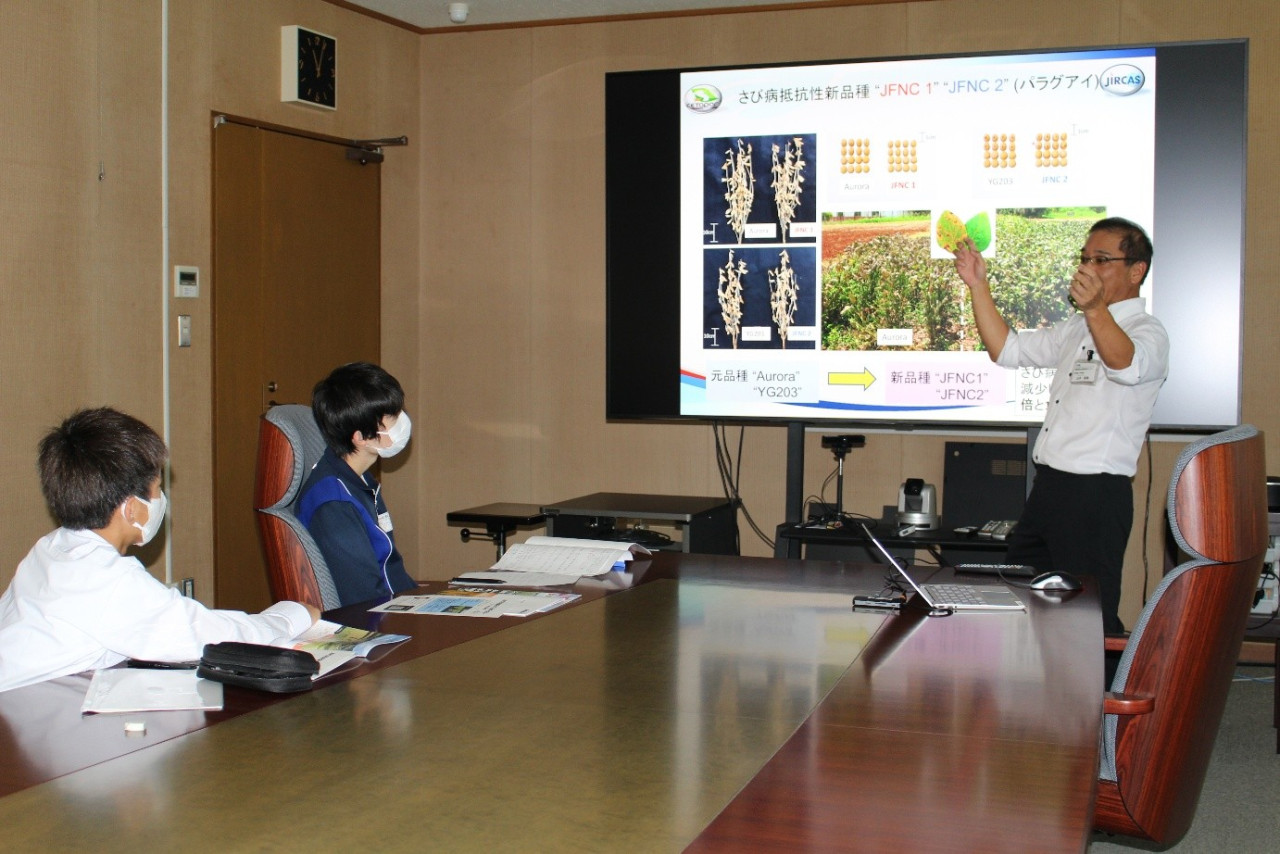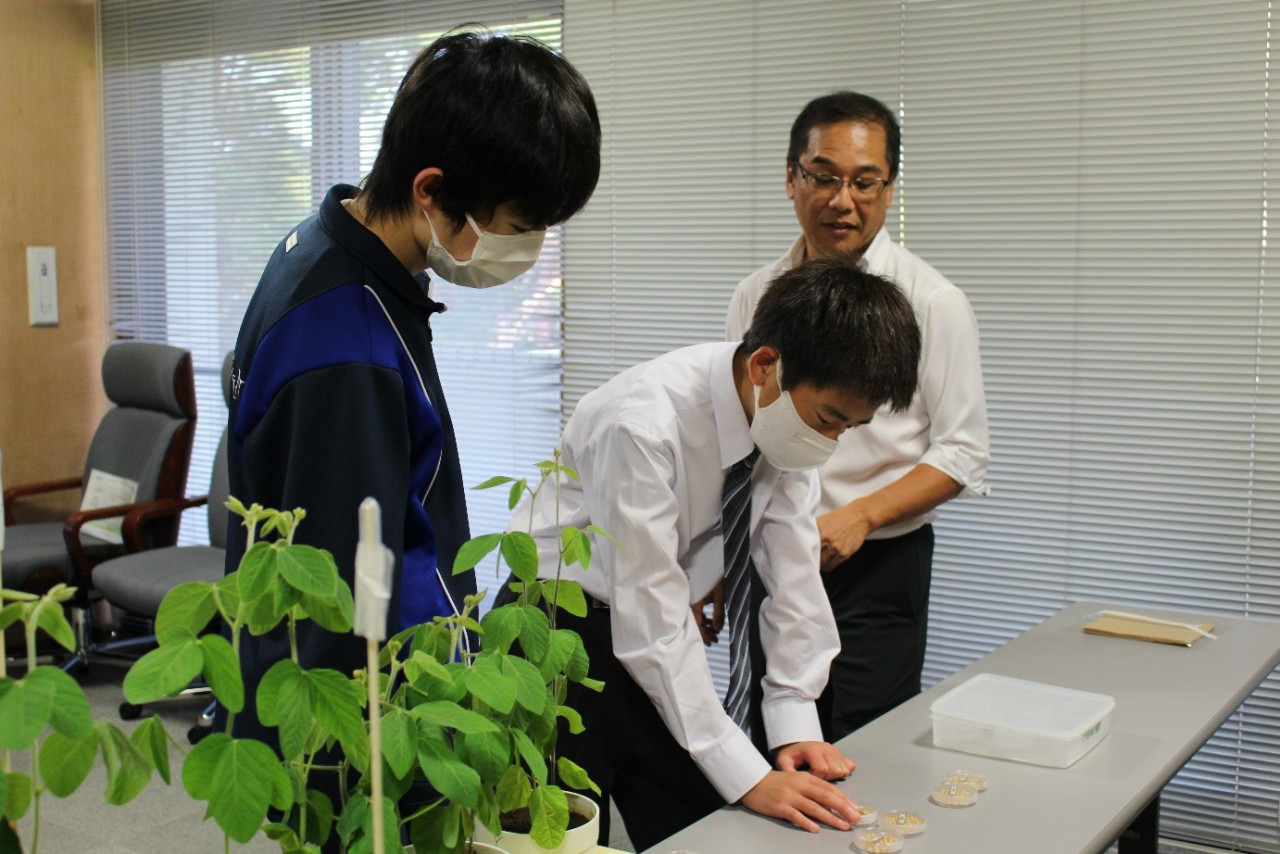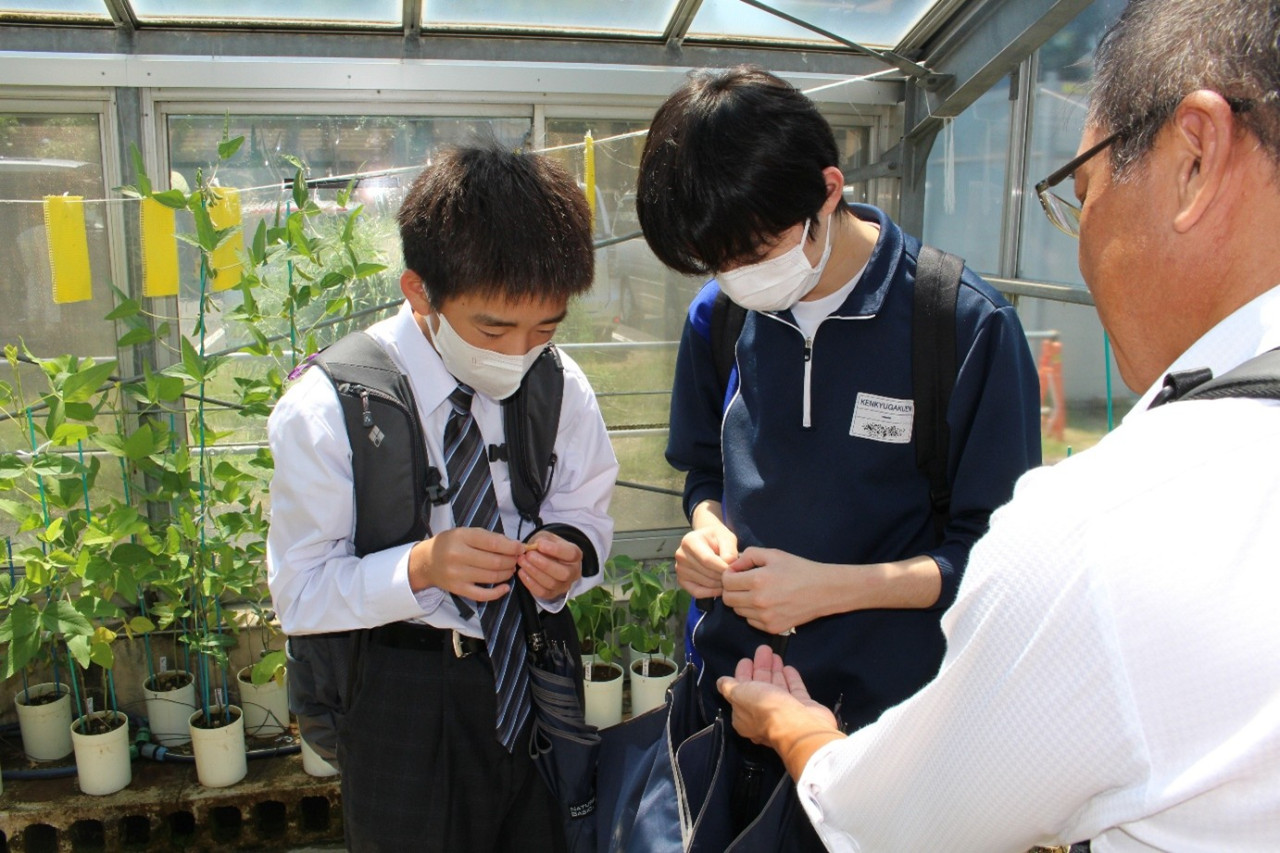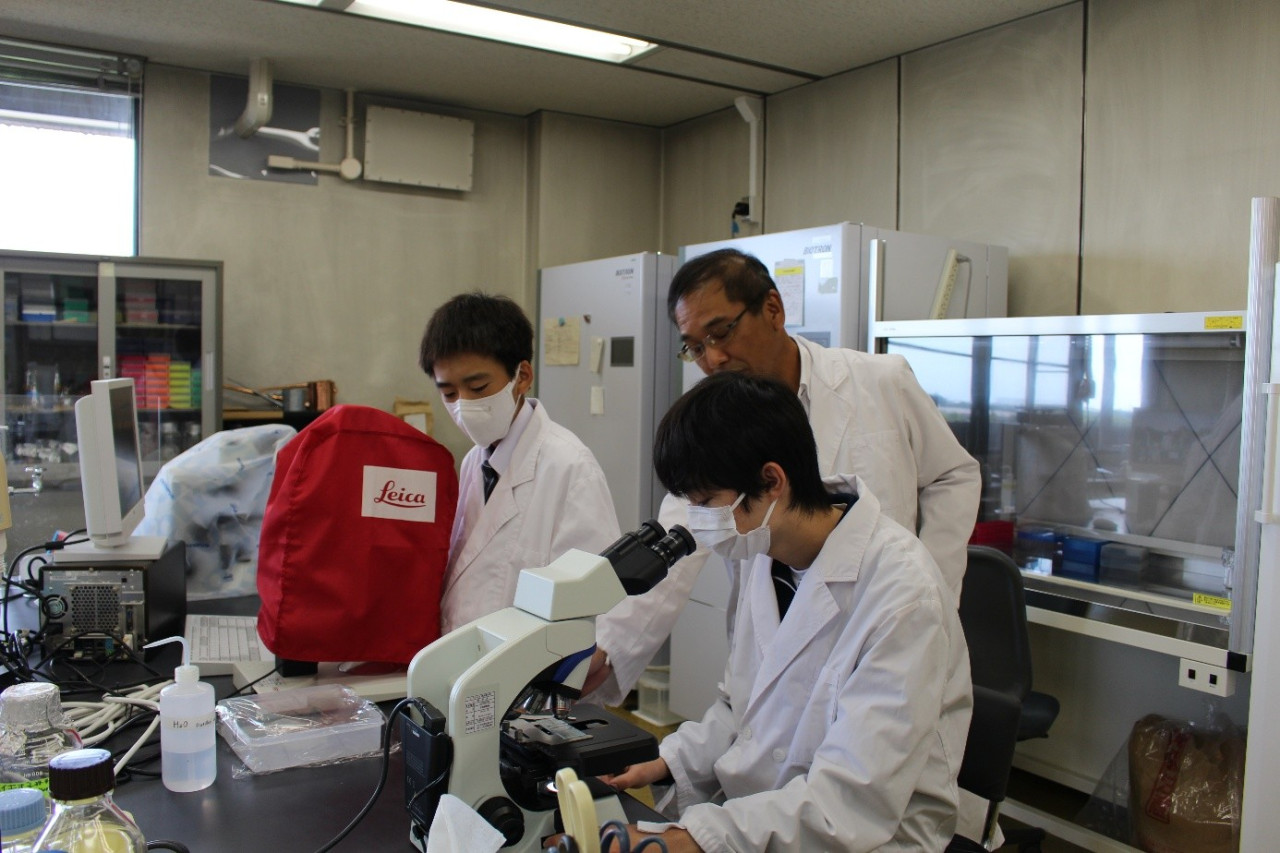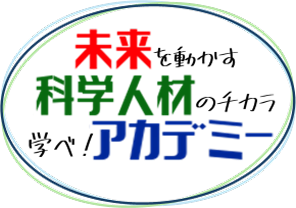
On Thursday, July 24, 2025, as part of the 6th session of the Future Science Talent Academy, two 8th grade students from Kenkyugakuen Junior High School in Tsukuba visited the Japan International Research Center for Agricultural Sciences (JIRCAS) to experience research comparing rust resistance in soybean varieties.
At their school, students engage in workplace learning programs at companies and research institutions to deepen their understanding of real-world applications. As part of this initiative, the students participated in a hands-on program based on research led by Senior Researcher YAMANAKA Naoki (Biological Resources and Post-harvest Division) on soybean rust resistance.
The visit began with an overview of JIRCAS’s research activities and its international collaborations, highlighting how the organization contributes to society through global research partnerships. The students then learned about the development of rust-resistant soybeans in South America. Through direct observation of plant samples, they explored how resistant varieties can reduce the need for fungicides and how soybean traits vary by country.
During the greenhouse tour, students observed soybean plants being grown in pots and discovered how environmental conditions affect plant size and growth rate, even within the same variety. By closely observing the plants, they independently identified differences such as anthocyanin pigmentation on stems and variations in the pod color at maturity.
In the afternoon, the students joined the research team in an experiment comparing rust resistance in soybean varieties. Using a stereomicroscope, they observed the leaves of both pre-improvement South American varieties and rust-resistant varieties jointly developed by JIRCAS, which had been inoculated with rust fungus 16 days earlier. By estimating the spore count from the spore suspension concentration, they assessed differences in rust resistance among the varieties.
Through both lectures and hands-on experiences in the lab and greenhouse, the students gained a deeper understanding of the research process, challenges in local soybean production, and the broader societal importance of agricultural science. The program also offered an opportunity for the students to reflect on the role of science and technology in society and the value of international cooperation, encouraging them to think more deeply about their own futures and goals.
Looking ahead, JIRCAS aims to continue offering opportunities like this—where students can engage directly with scientific research—to foster the next generation of science talent and inspire a deeper interest in science and technology.


